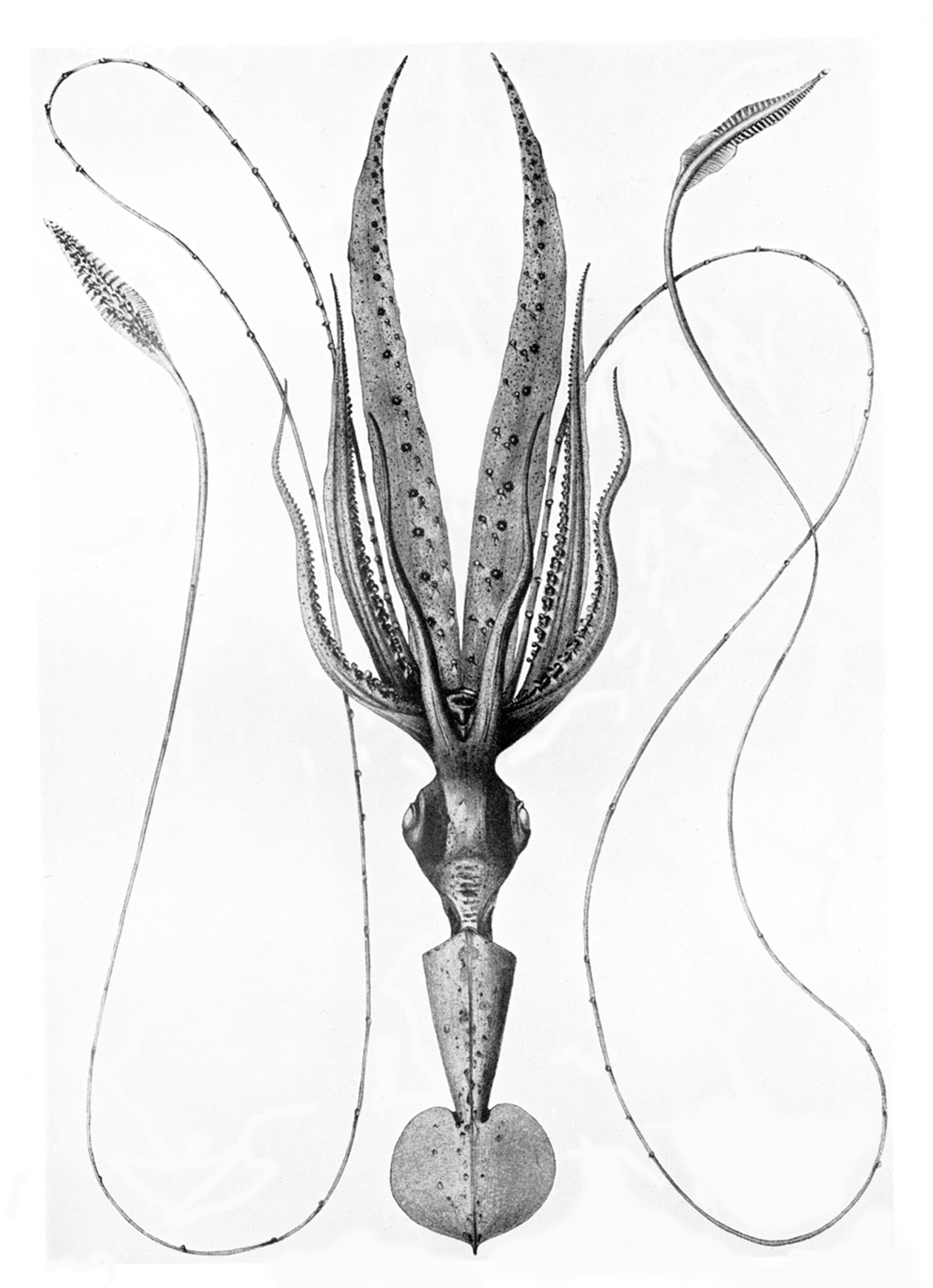|
Pterygioteuthis Hoylei
''Pterygioteuthis hoylei'' is a species of squid in the family Pyroteuthidae. It is considered conspecific with '' Pterygioteuthis giardi'' by some authorities. It can be identified from ''P. giardi'' by having four photophores on the tentacles and many chromatophores spread along the tentacle stalk and around the aboral surface of the tentacular club. It is also slightly larger than ''P. giardi'', it has been so far recorded only from the eastern tropical Pacific Ocean where it is the only species of in the family Pyroteuthidae to occur there, although its actual distribution may be wider than currently known. The specific name honours the British malacologist William Evans Hoyle Dr William Evans Hoyle FRSE (28 January 1855 – 7 February 1926) was a noted British zoologist. A specialist in deep sea creatures he worked on classification and illustrations from the Challenger Expedition from 1882 to 1888. Life Hoyle ... (1855–1926). References {{Taxonbar, from= ... [...More Info...] [...Related Items...] OR: [Wikipedia] [Google] [Baidu] |
Georg Johann Pfeffer
Georg Johann Pfeffer (1854–1931) was a German zoologist, primarily a malacologist, a scientist who studies mollusks. Pfeffer was born in Berlin. In 1887 he became curator of the , which was established in 1843 and destroyed during World War II. Pfeffer's published writings were mainly about cephalopods. The World Register of Marine Species database lists 133 marine taxa named by Pfeffer When Pfeffer's name is listed as an authority for a taxon such as the land snail genus '' Lamellaxis'' Strebel & Pfeffer, 1882, his name is ''not'' simply an orthographic error for the more commonly encountered molluscan authority Pfeiffer, i.e. Ludwig Karl Georg Pfeiffer Ludwig Karl Georg Pfeiffer, also known as Louis Pfeiffer (4 July 1805 – 2 October 1877), was a German physician, botanist and conchologist. Early life, Education & Medical Career Louis Pfeiffer was born in Cassel, the eldest son of the jurist ..., who lived 50 years earlier, from 1805 to 1877. Georg Johann Pfeffer ... [...More Info...] [...Related Items...] OR: [Wikipedia] [Google] [Baidu] |
Squid
True squid are molluscs with an elongated soft body, large eyes, eight arms, and two tentacles in the superorder Decapodiformes, though many other molluscs within the broader Neocoleoidea are also called squid despite not strictly fitting these criteria. Like all other cephalopods, squid have a distinct head, bilateral symmetry, and a mantle. They are mainly soft-bodied, like octopuses, but have a small internal skeleton in the form of a rod-like gladius (cephalopod), gladius or pen, made of chitin. Squid diverged from other cephalopods during the Jurassic and occupy a similar role to teleost fish as open water predators of similar size and behaviour. They play an important role in the open water food web. The two long tentacles are used to grab prey and the eight arms to hold and control it. The beak then cuts the food into suitable size chunks for swallowing. Squid are rapid swimmers, moving by Aquatic locomotion#Jet propulsion, jet propulsion, and largely locate their ... [...More Info...] [...Related Items...] OR: [Wikipedia] [Google] [Baidu] |
Pyroteuthidae
Pyroteuthidae (the fire squids) is a family of squids. The family comprises two genera. Species are diurnally mesopelagic, migrating into surface waters during the night. The family is characterised by the tentacles, which have a permanent constriction and bend near the base; and photophores occurring on the tentacles, eyeballs, and viscera In biology, an organ is a collection of tissues joined in a structural unit to serve a common function. In the hierarchy of life, an organ lies between tissue and an organ system. Tissues are formed from same type cells to act together in a f .... Members reach mantle lengths of 23–50 mm. Paralarvae of the family are common around the Hawaiian Islands, with up to 17% of collected specimens in the area belonging to Pyroteuthidae.John R. Bower, Michael P. Seki, Richard E. Young, Keith A. Bigelow, Jed Hirota, Pierre FlamentCephalopod paralarvae assemblages in Hawaiian Islands waters 14 November 2008. Species *Genus '' Pterygiote ... [...More Info...] [...Related Items...] OR: [Wikipedia] [Google] [Baidu] |
Pterygioteuthis Giardi
''Pterygioteuthis giardi'' is a species of squid in the family Pyroteuthidae. It is known as the roundear enope squid. The Specific name (zoology), specific name honors the France, French Zoology, zoologist and Marine Biology, marine biologist Alfred Mathieu Giard (1846-1908). Anatomy and morphology Squid in the family Pyroteuthidae have Photophores (small, light-producing organs) on viscera (internal organs), stalk of tentacles, and five large and ten small photophores underneath the eyes. The squid has a wide, triangular mantle with a rounded posterior end and rounded fins on the distal dorsal end of the mantle. Their mantles are generally less than 34 mm long. Their tentacles look like bent clubs due to their permanent constriction. Adult squid in the ''Pterygioteuthis'' genera lack hooks on their tentacular clubs, but do have some hooks on the arms. Male squid have a specialized arm used to transfer sperm to females called hectocotyli. Females do not have suckers o ... [...More Info...] [...Related Items...] OR: [Wikipedia] [Google] [Baidu] |

.jpg)
